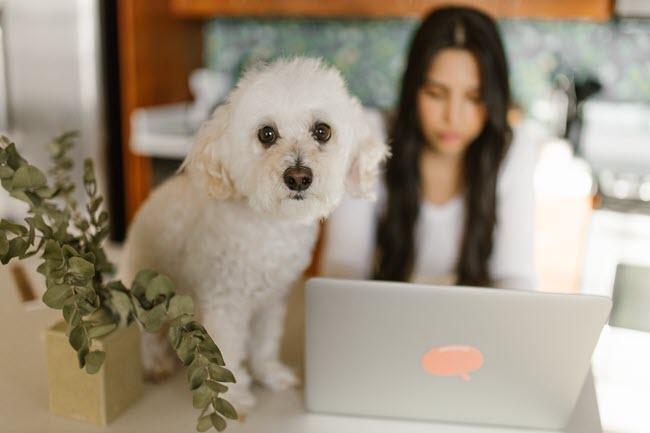As pet owners, we are often faced with many challenges. One of the most recent challenges may include pet separation anxiety when we have to go back to work after a year spent working remotely. The good news is that there are ways to help your pet through the transition and ensure they’re happy and healthy in this new normal. This blog post will give you some tips on how to do just that!
Tip #1: Planning ahead is the key to success
As a remote worker, you likely have some apprehension about the changes to your schedule as a result of returning to work. Now, think about it from your pet’s point of view: Your pet has been with you 24×7, and now you’re leaving 8-10 hours per day. To them, it feels as if their world has been turned upside down. (And quite honestly, maybe yours, too, as our pets have been such a tremendous source of support and companionship over the past year.)
Plan ahead for this transition by getting your pet accustomed to short intervals of time where you leave and return a bit later. Soon, he or she will have confidence that you will be back and be ready to spend time with them. An important part of this is to not become overly sad or emotional when leaving, or overly excited upon your return, as this will inadvertently reinforce your pet’s perception of the impact of your leaving.
Tip #2: Establish healthy routines for both pet and owner
Many pet owners find it helpful to establish new “normal” routines for themselves after returning to work after working remotely. This may mean adjusting times for your walks or backyard time, meal times, and even bedtimes. Your very intuitive pet will pick up on these changes. And, this means that your pet will also pick up on any stress that you’re feeling, too. Spending time together on a leisurely walk or even just getting on the floor with them to play “tug”, “hide the toy” or learning a new trick will be something that you both can enjoy.
Tip #3: Recognize the deafening silence
Think of the extra noise and activity your pet was surrounded with while you worked from home. Now your absence leaves them to focus their mind on other things, and if there’s nothing, they will get creative. Try leaving on a pet-friendly YouTube Channel, DogTV, or even background music to break the silence of your home.
Tip #4: Dog-friendly work environment? Bring Fido along!
A recent study was conducted which showed that up to 60% of workplaces are considering allowing pet owners more flexibility in the workplace, which may include bringing pets to work or even reducing the amount of time employees need to spend physically at the office. This may require a bit of extra training to bring your dog to work, but it may be an experience that you both enjoy.
If this is simply not an option, consider having your pet attend a local doggy daycare where they will be able to play and enjoy their day, and return home mentally enriched and physically tired.
Tip #5: Know when to ask for help
If you’re coming home to messes created by your pet, or a pet who seems distraught at your absence, instead of scolding or punishing them, look to the cause behind the behavior. Make an appointment to see us and we can work together to identify behavior modification strategies, pheromones that may help calm your pet (such as Adaptil or Feliway – both available in our online store), or even medications that can help ease this difficult time.
Tip #6: Don’t give up
Yes, pet separation anxiety can be a very frustrating issue. But it doesn’t have to continue being one! We’re here for you and your pet every step of the way in order to help both of you safely transition back into your “new normal” routine.
Contact our South Hyland Veterinary Hospital team for any questions you have about your pet’s behavior and navigating this difficult transition.
Image credit: Pexels



